Unistellar eVscope 2 Telescope Review
- Easy to use hardware and software
- Automatic positioning and seeking of space objects
- Community connection with other Unistellar users
- Backpack makes for simple (though bulky) transport
- Enormous potential as education tool
- Requires mobile app to move
- Needs battery power to use (rechargeable internal battery)
- Priced for professional use
- Electronic eyepiece means astrophotography is limited
Over the past couple of weeks I've been using the Unistellar eVscope 2 whenever possible. On clear nights, I've brought this smart telescope outside to bear witness to the stars and our nearby moon. With this device, I was given the ability to not only manually seek and find bits of our solar system, I was able to command the device to seek and find constellations and space objects with the device's automatic detection and motorized mount.
The Unistellar eVscope 2 is a telescope that moves up and down, left and right as it is commanded by a connected app on a smartphone. This app works on iOS and Android devices so long as you have iOS 12 or Android 6 on a device with GPS, WiFi, and a touchscreen.
The eyepiece and power
This telescope has an eyepiece – which is different from the significantly less expensive Unistellar eVscope eQuinox, which relies solely on connected devices to work with and view. Both devices have motorized mounts, both weigh effectively the same, and both have a 4.5 inch diameter mirror inside. The eVscope 2 comes with its own carrying backpack, has a significantly larger field of view, and a significantly better resolving power than the eQuinox.
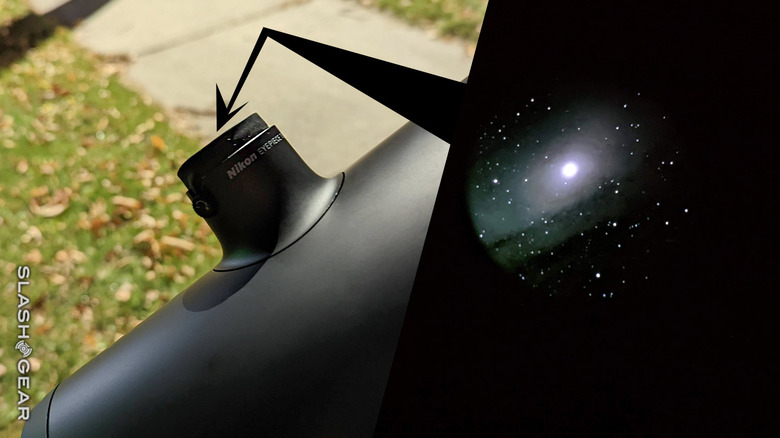
This eyepiece is what Unistellar describes as a "defining feature" of this telescope. This eyepiece was developed by Nikon (as it suggests on its rim), and works with a micro OLED screen. As it is an electronic eyepiece, the telescope will need to be powered on for it to be used.
This is true of the entire telescope, mind you. It has an internal rechargeable battery and needs to be powered on in order to be used. The telescope cannot be used in any sort of analog mode, as such. The use of the electronic eyepiece also means we're limited in how much we're able to use this as a sort of an extension of a 3rd-party camera. DSLR attachments to some telescopes allow for spectacular DIY astrophotography opportunities – here it's all up to the telescope's image processing alone – which isn't necessarily a deal-breaker for astrophotographic image capture.
Because we're working with a smart (powered) telescope here, we're afforded a set of advanced features, like "Enhanced Vision." With this system, the telescope allows light to accumulate and stay stored in its memory so that we are able to see live observations of faint objects.
Autonomous Field Detection
The most awesome feature in this telescope is its ability to detect its own place in space and time by comparing what it sees with the GPS location your smartphone delivers to it. Once powered on, the telescope generally completed detecting its place in a matter of seconds-to-minutes.
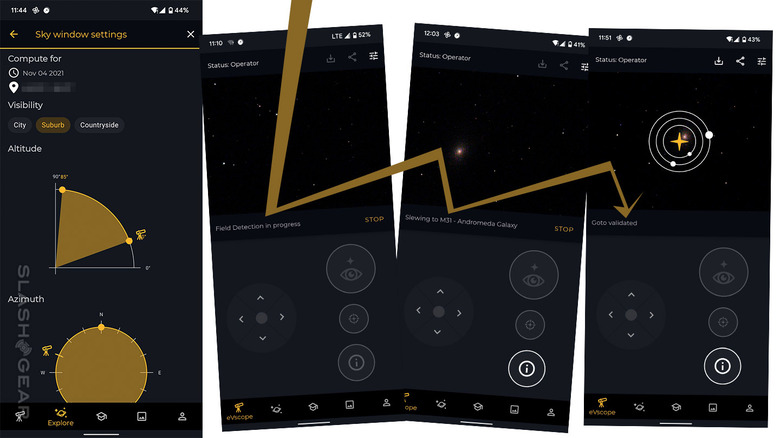
Once calibrated, this telescope delivers information to the user about what's being viewed and shown. This makes the entire experience feel magical. Once calibrated, the user can tap the "Explore" tab in the telescope's app on their phone and find a constellation or planetary body of their choice, tap it, and watch the telescope automatically move to find it.
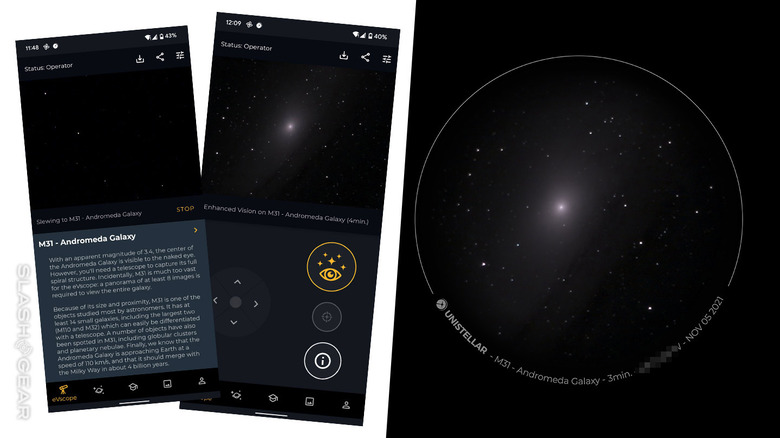
Because the telescope knows where it is in space and time, it can move itself into position to the precise location of a wide variety of constellations. As I look at the app right this minute, I see a "Recommended" section with the M57 Ring Nebula, M51 Whirlpool Galaxy, and M13 Hercules Globular Cluster.
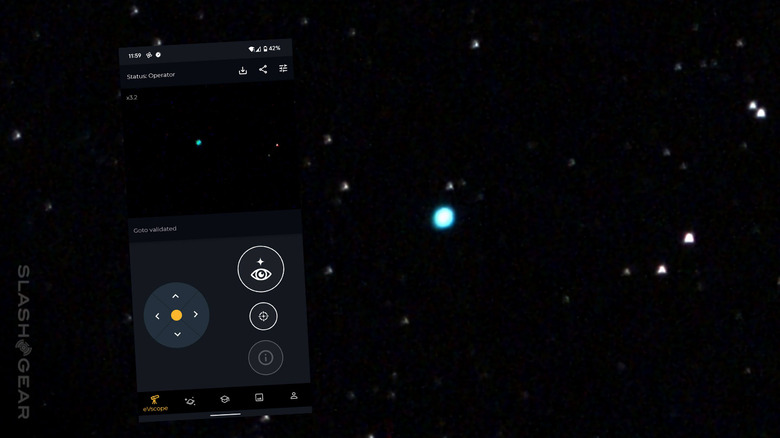
This app shows known space objects that'll be "fading soon" and others that'll be "appearing soon." It includes galaxies, nebulae, clusters, and stars. The telescope can take part in Unistellar's work with the SETI Institute to watch cometary activity, exoplanet transits, asteroid occultations, and participate in planetary defense.
Planetary Defense
This might seem wild, at first, but bear with me here. With this telescope, in its associated app's Science tab, there is a Planetary defense feature. With this feature, users are able to enter RA and declination, set the telescope to target, and make a recording.
The system allows the user to set exposure time, gain (dB), and duration of the recording, and launch. A similar set of variables is available for Cometary activity, Exoplanet transits, and Asteroid occultations.
Specifications
This 450mm focal length telescope has a maximum optical magnification of 50x, and a digital magnification of 150x (recommended max) and up to 400x. The field of view this telescope works with is 34 arcmin x 47 arcmin, with a resolving power of 1.33 arcsecond.
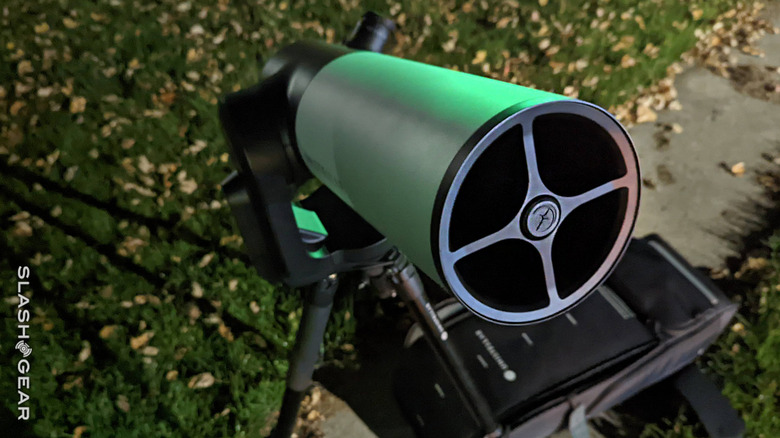
There is a 4.5-inch diameter mirror inside along with a Sony IMX347 image processor and a side-mounted Nikon digital eyepiece. This telescope works with a motorized Alt-Az Mount, and the entire device (with tripod attached) weighs in at 19.8 lbs (9kg). Internal data storage capacity for this telescope is 64GB, and data can be transferred wirelessly via WiFi to a users' smartphone or tablet.
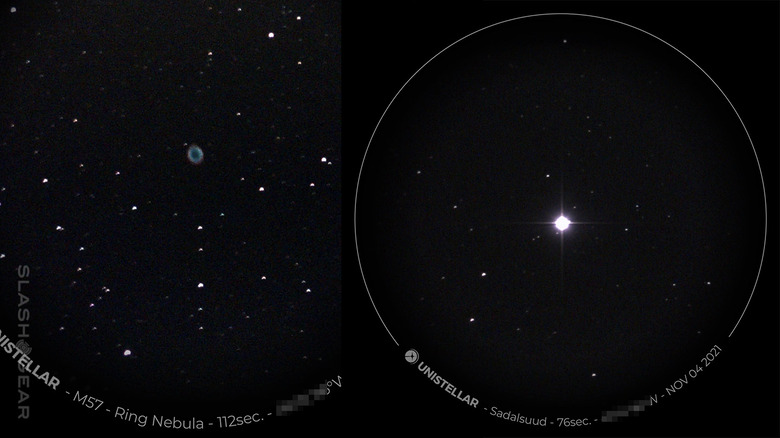
Above and below you'll see a few examples of what this telescope's connected app delivers to the user's smartphone upon request. Each image is presented in a circular frame and includes a note about the location of the telescope and what the image is showing. If you've centered on a known space object, the captured image file will have a title as such. These images were generated after capturing light for a relatively short amount of time. Imagery gets more spectacular as each area of focus is allowed to gather light.
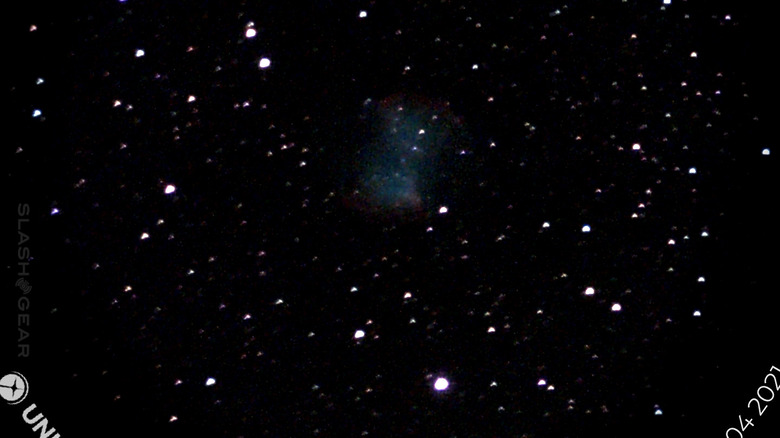
Wrap-up
If you're looking for a starter telescope, this isn't it. If you've been using telescopes as a hobby your whole life and you're looking for a telescope that might very well last you a decade into the future, or more, this might very well be the best telescope for you.

If you're a science teacher or professor looking for a teaching tool that allows quick set-up, easy obvservations, and precise and accurate targeting of space objects, this is the one. You might also want to consider the less expensive relatives of this telescope also sold by Unistellar, depending on how important that eyepiece is to your experience.
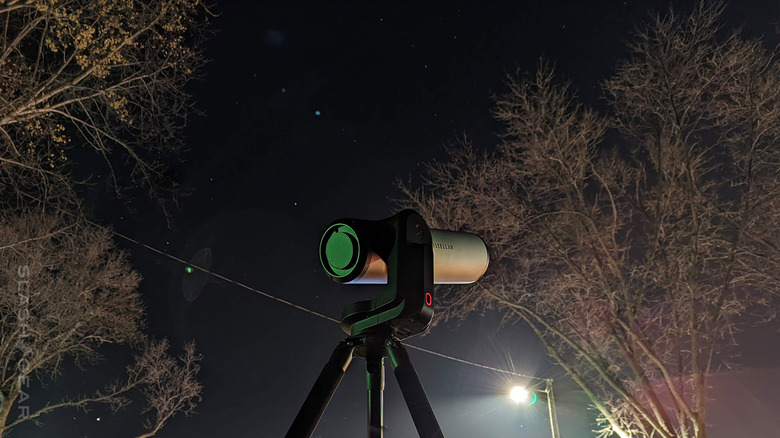
The price of the Unistellar eVscope 2 is approximately $4,199 USD (and an additional $59 for shipping). You can also opt for a payment plan that splits the cost into two payments of $2,129 (that includes shipping). Pricing is dependent on your region, and you'll get a 30-day trial and 2 year warranty right out the gate.
